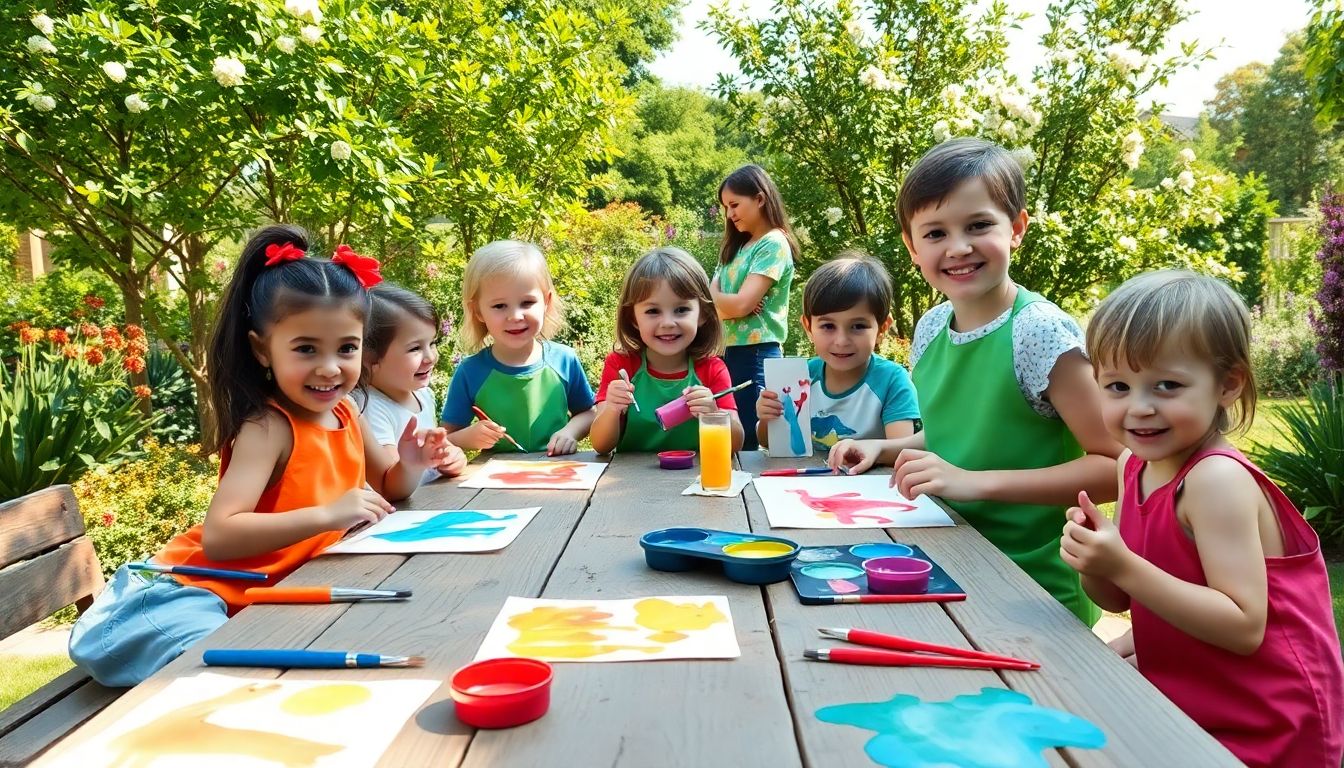Introduction
Painting crafts, along with other crafts and art, play a huge role in the life of a child. They teach them how to use their fingers to improve hand-eye coordination and hand functioning, improve imagination, and provide children with a means of expression. Painting crafts are particularly great since they’re easy, need little equipment, and can be such good times. Drawing early gives self-confidence and leads to endless creativity. They are great crafts for kids of all ages and are easily adapted really well to their skill and interest.
Why Painting Crafts are Appropriate for Kids
Benefits of Painting Crafts for Kids
Painting also allows for the development of small hand muscles and hand-eye coordination. Children dip fingers or brushes into paint and demonstrate control and dexterity. And, as with anything, painting allows for creativity and imagination. Children can express themselves and try things out. Finishing a painting makes children proud, which increases confidence each time they have something done.
Age-Appropriate Painting Crafts
For ages 1-3, sponge stamping and finger painting suit. They are easy to do and safe, and shape little hands. Preschoolers 3-5 years old enjoy more complicated activity such as theme paintings or Q-tips dot painting. Early elementary age children 6-8 can attempt brush strokes and scenes with multiple details. If something appropriate is done at the correct age group, painting becomes easy and enjoyable.
Safety Concerns
Choose washable and non-toxic paint every time. Place close to young children to prevent ingestion or free use of paint. Play with child-safe material and brushes for safe play. Non-toxic material and paint are the best choices for the green family. A safe place gives freedom to the children to be involved in play without fear.
Easy Painting Craft Activities for Children
Finger Painting Fun
Finger painting is a time-honored preschool classic. It’s a great activity to get them experimenting with colors and textures in a fun manner. Paint large sheets of paper with washable finger paint. Invite children to paint freehand or copies of objects. It’s a great activity to introduce the concept of art and on sensory experience building.
Sponge Painting Projects
Even sponge can be altered to use for stamping. Sponges cut in star, heart, or circular form with scissors. Paint-dipped-sponges are used to stamp on paper or canvas to get pattern. Kids may be employed to create background, landscape, or abstraction. Pattern and shape practice will be best suited to this technique.
Q-tip Art Creations
Q-tips work perfectly for applying minute detail in a painting. Paint dots, lines, or designs using Q-tips. Practice pointillism-style paintings or dotted animals and flowers. Using paint and some Q-tips will provide wonderful detailed artwork.
Brush Painting for Beginners
Basic brushes are wonderful tools to use while painting animals, flowers, and abstract patterns. Employ acrylic or tempera paint along with child-friendly brushes. Let children practice and achieve stroke, dips, and swirls. It assists them in acquiring control and getting familiar with the painting effects.
Nature-Inspired Painting Crafts
Collect leaves, stems, or flowers outdoors. Use these objects as stamps or brushes to paint. Paint with paper to make texture paintings of the outdoors. Students are learning shape and texture and outdoors.
Recycled Material Painting Projects
Paint with recycled materials such as bottle caps, cardboard, and strips of old torn paper. They are not only eco-friendly but also challenge the imagination. Paint or glue recyclable objects onto other recyclable objects in order to design wonderful works of art. It is a great way of teaching values of reuse and sustainability but with fun.
Step-by-Step Guide to Hosting a Kids’ Painting Craft Session
Creating a Safe and Creative Environment
Layout a big working area and plastic tablecloths or newspaper to lay on the tables. Have all the items within easy reach. Use nontoxic, washable paint and child brushes. Ventilate the room and never leave them alone.
Planning the Craft Activities
Pick activities suitable for the age. Prepare everything beforehand to attain an even pace. For instance, prepare sponges and paints for children and brushes and templates for bigger children.
Encouraging Children’s Participation in the Process
Let them do it by themselves. Suggest and let them go wild with their imagination. Let them build their own confidence. Sometimes all they require is some encouragement to urge them to practice their technique.
Sharing and Appreciating Artwork
Emphasize their finished work on walls, fridge, or specially designed frames. Point to them as references to boost their ego. Praise or reward little achievements to encourage creativity. This makes children excited to create more drawings.
Professional Tips and Tools
Professionals who specialize in child development believe that children develop emotionally and mentally through arts.
Look for downloadable templates and tutorials on the internet to assist your activity.
Crayola, tempera, and eco-friendly brands are some of the safest ones to purchase painting supplies.
Plan theme paint days—ocean adventure, space travel, or holiday paintings—to enjoy painting and to push your skills.
Conclusion
Gross painting crafts are great ways of providing kids with the autonomy to make and communicate. They’re cheap, easy, and any craft made can be rendered usable in any eventuality and possibly find its place in any situation. Arts a day can turn on the child’s mind and sharpen skill requirements. Therefore stock up material, space them out, and watch your children’s inwards creativity flourish!
